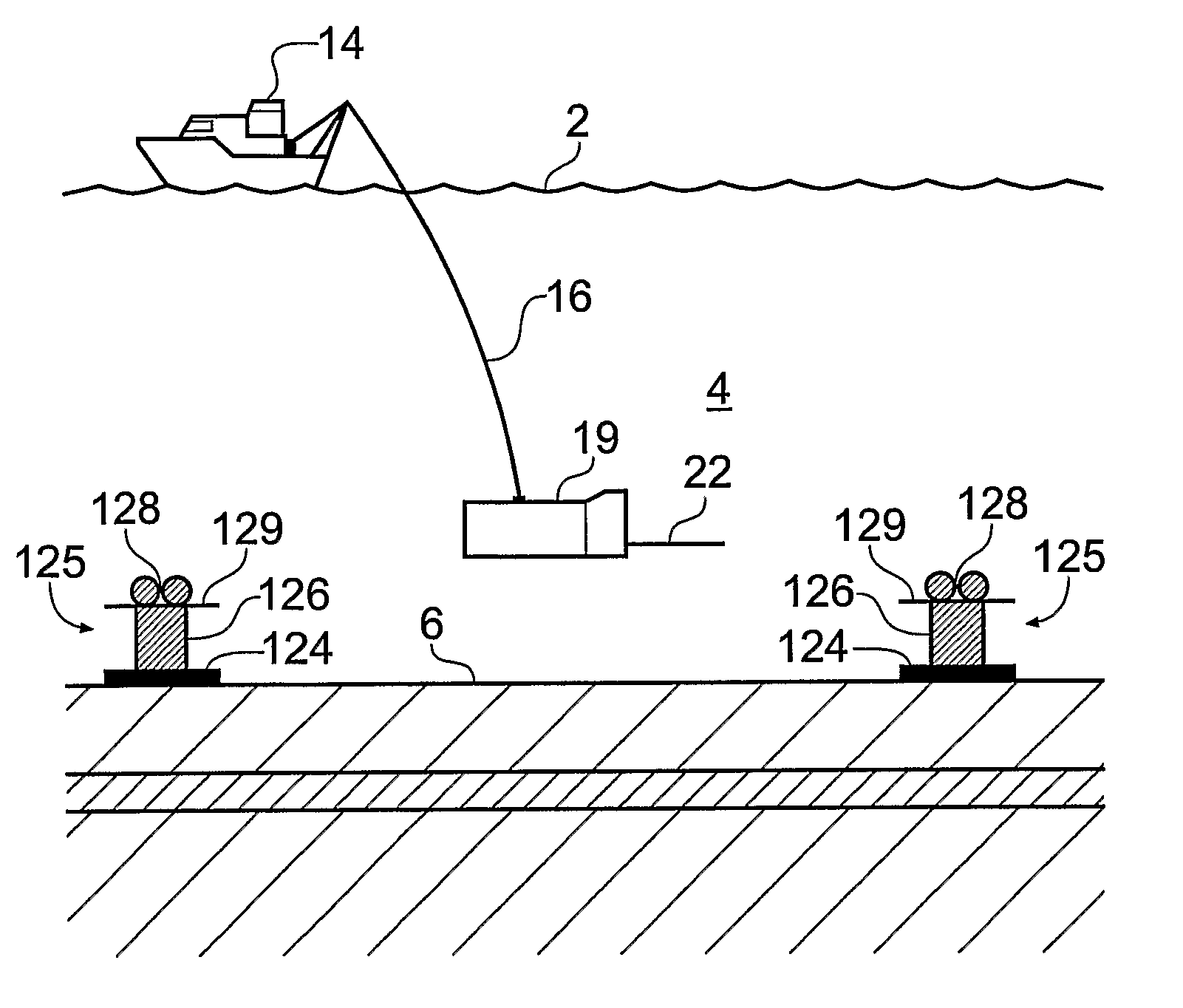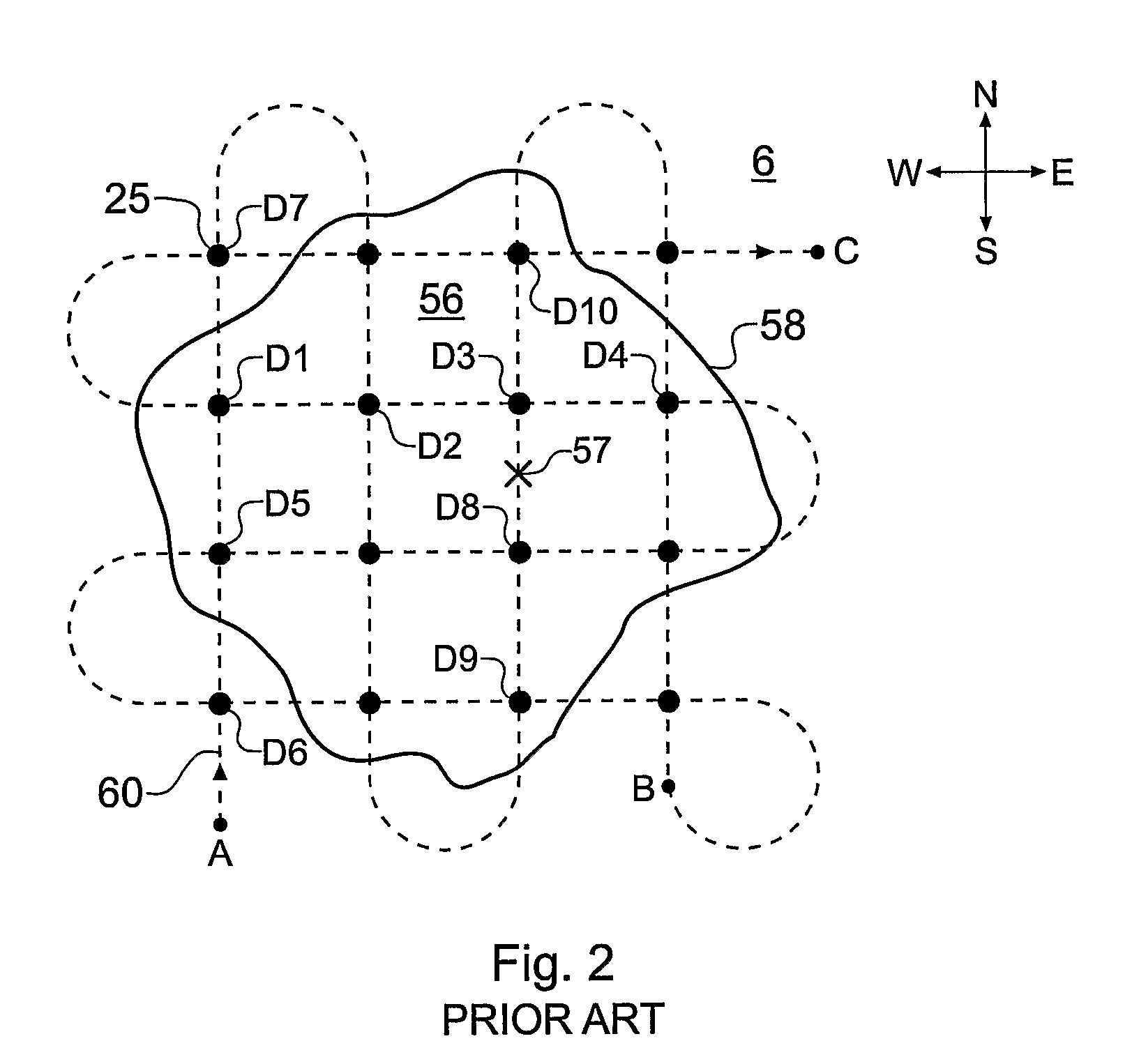Electromagnetic surveying for resistive or conductive bodies
a technology of electromagnetic surveying and resistive bodies, applied in the field of seafloor electromagnetic surveying for resistive and/or conductive bodies, can solve the problem that the vertical field measurement is more susceptible to nois
- Summary
- Abstract
- Description
- Claims
- Application Information
AI Technical Summary
Benefits of technology
Problems solved by technology
Method used
Image
Examples
first embodiment
[0096]Equation 7, shown in FIG. 5G, defines a linear combination of a vertical gradient in the radial electric field data Er and the azimuthal magnetic field data Bφ used in a method of analysing results according to the invention. Combinations of the electric and magnetic field data such as this are referred to as combined response data.
second embodiment
[0097]Equation 8, shown in FIG. 5H, defines another linear combination of the vertical gradient in the azimuthal electric field data Eφ and the radial magnetic field data Br used in a method of analysing results according to the invention.
[0098]One way of obtaining the vertical gradients in the electric field data is by sampling the electric field at two (or more) different heights during surveying, for example by deploying multiple receivers at different heights or a single receiver having multiple detectors at different heights.
[0099]FIG. 6A schematically shows a surface vessel 14 undertaking controlled source electromagnetic (CSEM) surveying of a subterranean strata configuration using a survey method according to one embodiment of the invention. The surface vessel 14 floats on the surface 2 of a body of water, in this case seawater 4 of depth h meters. A submersible vehicle 19 carrying a source in the form of an HED transmitter 22 is attached to the surface vessel 14 by an umbil...
PUM
 Login to View More
Login to View More Abstract
Description
Claims
Application Information
 Login to View More
Login to View More - R&D
- Intellectual Property
- Life Sciences
- Materials
- Tech Scout
- Unparalleled Data Quality
- Higher Quality Content
- 60% Fewer Hallucinations
Browse by: Latest US Patents, China's latest patents, Technical Efficacy Thesaurus, Application Domain, Technology Topic, Popular Technical Reports.
© 2025 PatSnap. All rights reserved.Legal|Privacy policy|Modern Slavery Act Transparency Statement|Sitemap|About US| Contact US: help@patsnap.com



